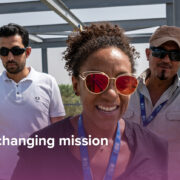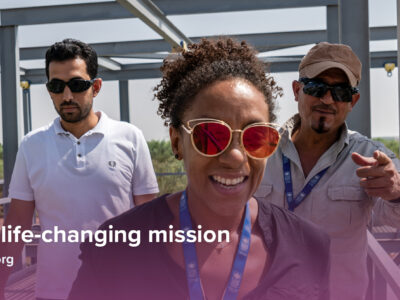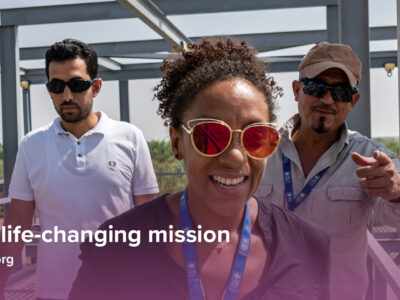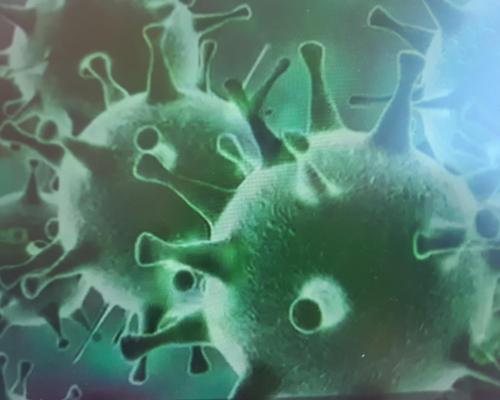UN Women www.unwomen.org, grounded in the vision of equality enshrined in the Charter of the United Nations www.un.org, works for the elimination of discrimination against women and girls, the empowerment of women and the achievement of equality between women and men as partners and beneficiaries of development, human rights, humanitarian action and peace and security.
The 2030 Agenda for Sustainable Development adopted by the United Nations General Assembly in September 2015, represents a significant reinforcement of the inextricable links between gender equality, human rights, economic growth and environmental sustainability. Gender equality and women’s empowerment is a priority throughout the 17 Sustainable Development Goals (SDGs) https://sdgs.un.org
To achieve the SDGs, innovative, multi-stakeholder partnerships and urgent transformative action and plans are necessary, considering the effects of COVID-19 on women and girls and the ongoing global recession due to the war between Russia and Ukraine. Transformation implies a fundamental shift in social structures, attitudes, and behaviour by ALL stakeholders that contribute to sustainable human development directly and indirectly.
Placing women’s rights at the centre of all its efforts, and in line with the ongoing UN Reform, UN Women South Africa Multi-Country Office (SAMCO) leads and coordinates the United Nations system efforts in Botswana, Eswatini, Lesotho, Namibia and South Africa to ensure that commitments on gender equality and gender mainstreaming translate into meaningful actions and interventions that transform women’s livelihoods.
At the UN 58th Plenary Meeting of the 77th Session, one of the key priorities for 2023 for the UN Secretary General is the right to full gender equality. He emphasized that “Gender equality is both a fundamental human right, and a solution to some of our greatest global challenges”. https://media.un.org
The Secretary General also called for a a new Bretton Woods moment. “A new commitment to place the dramatic needs of developing countries at the center of every decision and mechanism of the global financial system. A new resolve to address the appalling inequalities and injustices laid bare once again by the pandemic and the response.”
He also reiterated the dual challenges faced by Middle Income Countries (MCI) as well as Least Development Countries and appealed to Financial Institutions to reform current approaches.
Context:
The UNDP publishes the annual Human Development Report, with a particular theme, drawing attention to progress on various aspects that contribute to a holistic “human development” https://hdr.undp.org The report has a detailed human development index which classifies countries as either Higher Income Countries, Middle Income Countries or Lower Income Countries. The HDI was created to emphasize that people and their capabilities should be the ultimate criteria for assessing the development of a country, not economic growth alone. Gender Equality is featured in the HDI and demonstrates the need to urgently address issues of Women Empowerment if meaningful human development is to be achieved, more so for the millions of women not accessing the benefits and services generated by the States and its stakeholders/partners.
Globally, particularly in Africa, economic disparities and widening employment gaps between men and women continue to exist. In 2022, there were estimated to be approximately 3.3 billion people employed worldwide, compared with 2.27 billion people in 1991 – an increase of over one billion people. Of these employed, approximately 2.02 billion were males, and 1.3 billion were females. The latest global labour force participation rate for women is about 47% compared to 72% for men (ILO, 2022). Although the phenomenon of widening employment gaps is more pronounced in South Africa, with higher unemployment rates for the general population as compared to the rest of the world, a majority of employed women (58%) work in the informal sector with no social protection provisions like sick leave, maternity and unemployment benefits and pension.
Oxfam recently published a report on The Crisis of Extreme Inequality in SADC – Fighting austerity and the COVID-19 Pandemic. The report highlights glaring inequalities and its implication on development and more so how it is affecting women in the region. Southern Africa is the most unequal with South Africa, Namibia and Zambia being the most unequal, and Mauritius, Tanzania, and Democratic Republic of Congo (DRC) the least.
Several reports, webinars, conferences, workshops, podcasts, articles by various stakeholders have illustrated and drawn urgent attention to policy makers and private sector on the impact of COVID-19 and its impact on marginalised vulnerable women and girls. The increased poverty levels being experienced by vulnerable women and girls will require innovation approaches and multi-stakeholder collaboration to reach the millions of women falling through the cracks. The 2023 World Economic Forum also addressed the compounding effects being faced by women now coupled with the ongoing Climate Change.
Justification – ‘The Nation of Women’ Flagship Report
UN Women South Africa Multi-Country Office, based in Pretoria, South Africa has developed its 2023-2026 Strategic Note which addresses interventions to achieve Gender Equality and Women Empowerment in the five countries it serves. The Strategic Note is deliberate in responding to the SDG commitment to Leave No one Behind. Across Southern Africa, take away the borders, and you see a “Nation of Women”, of approximately 20 million women, who do not enjoy the current Lower/MIC (L/MIC) status of the 5 countries. This approach is also in alignment to the UN Women Global Strategic Plan which frames our work in Southern Africa.
To address this enormous challenge, a detailed research and evidence-based flagship report is required, using existing data sets to highlight the following:
- Who benefits from L/MIC status on Southern Africa?
- For women in Southern Africa, who lives in line with the HDI L/MIC status, and who doesn’t, across Southern Africa?
- How do women who do not live in line with HDI L/MIC status live, what information about their lives can we draw from existing data?
- How does the HDI ranking affect the Nation of Women in the 5 countries across Southern Africa?
- What do we know about the voices and views of the Nation of Women? Who represents them, politically, in terms of advocacy, and do they, and how do they, influence policy?
- What are the various stakeholders (governments, CSO, private sector, Businesswomen Associations and Cooperatives and media) strategy to reach the ‘Nation of Women’?
- What’s the cost of leaving behind the Nation of Women, and what’s the opportunity and the benefits of engaging them?
The primary purpose of the report is to ‘bend’ the focus of Governments, Development Partners, Donors, and the UN, to see and to serve and respond to, the Nation of Women. In addition to being an advocacy tool, the report will also serve as a major fundraising tool that will create a narrative to support focused investment in the transformation of the Nation of Women across MIC in Southern Africa.










Comments